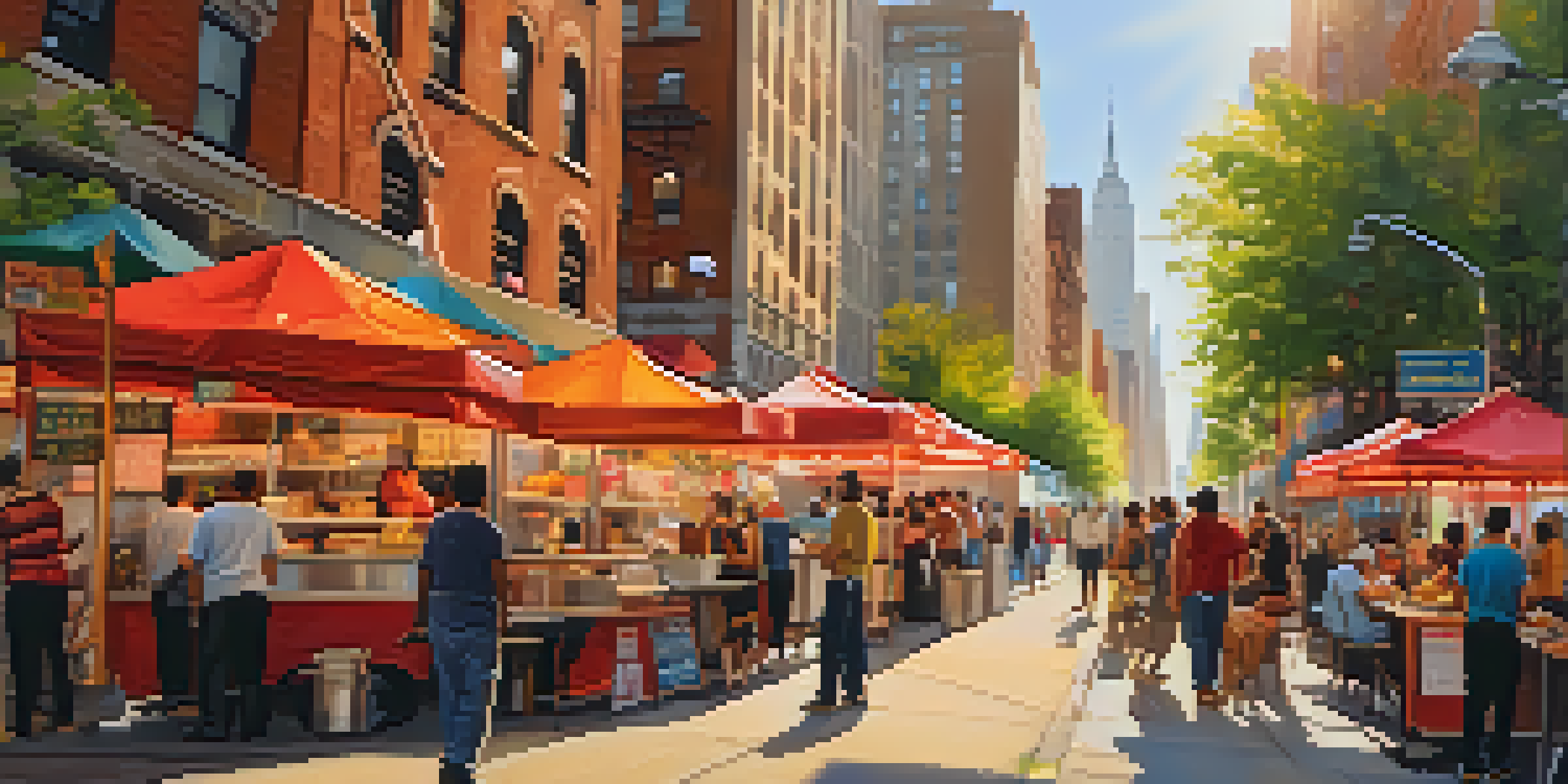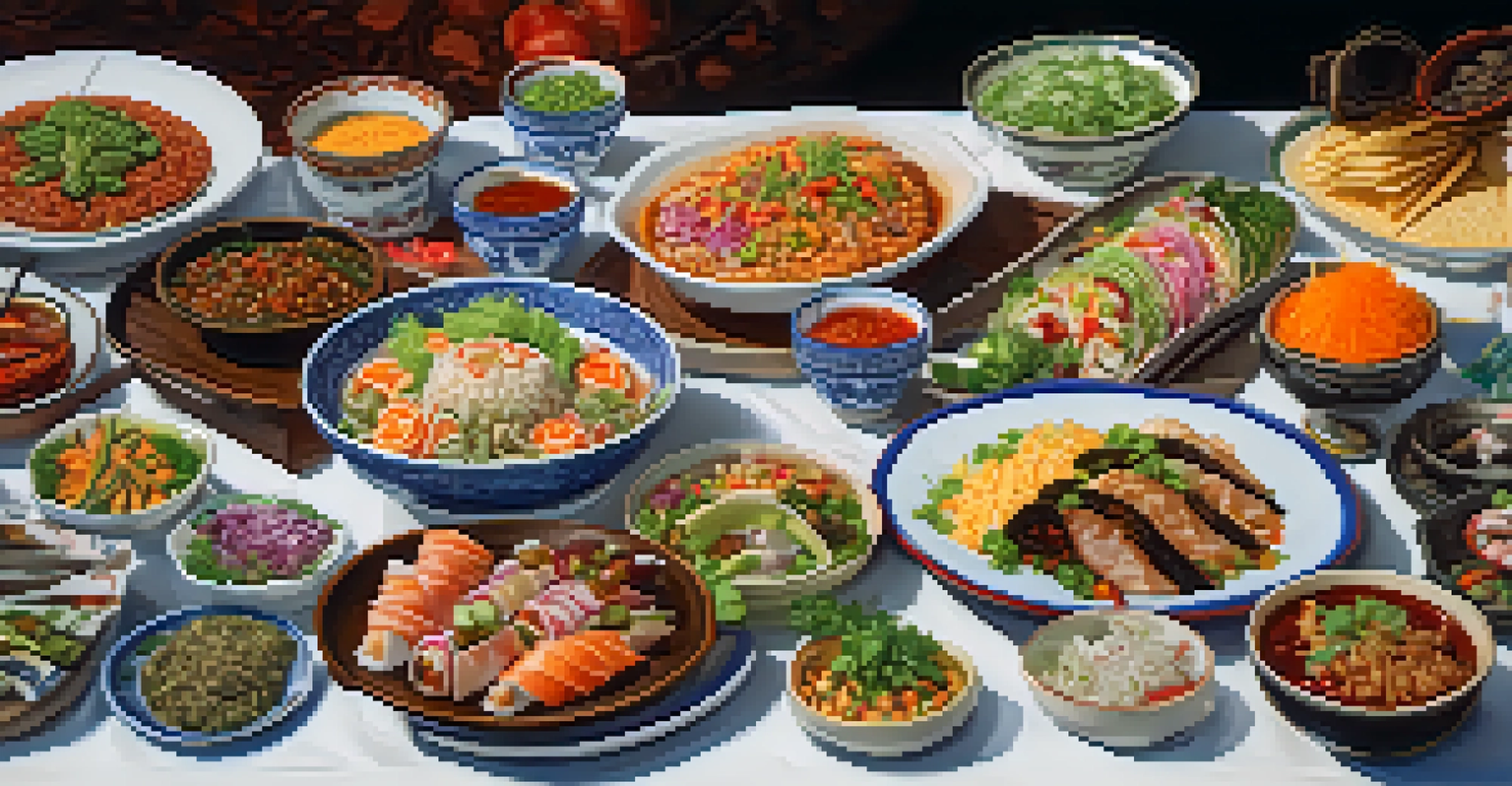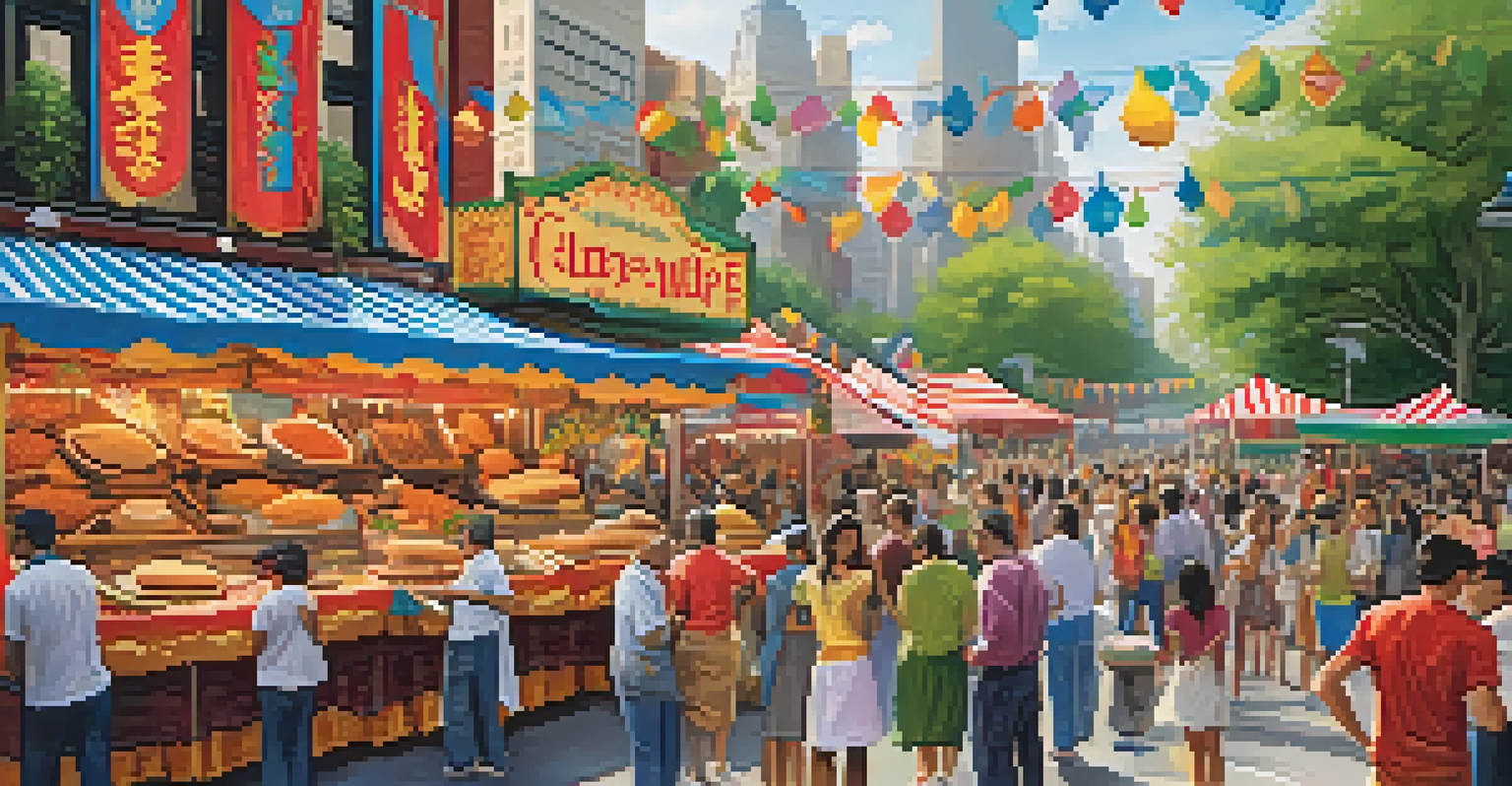Culinary Diversity: A Taste of NYC's Immigrant Flavors

The Melting Pot: NYC's Immigrant Culinary Heritage
New York City is often referred to as a melting pot, and its culinary scene is a delicious testament to this. With over 800 languages spoken, the city boasts an incredible variety of food influenced by the cultures of its residents. From Italian to Ethiopian, every corner of the city offers a unique taste of the world.
Food is our common ground, a universal experience.
This rich diversity is not just about the food itself; it's about the stories and traditions that come with it. Each dish carries the history of the immigrants who brought it here, reflecting their journey and adaptation to a new home. By exploring these flavors, we gain insight into the lives of those who have shaped New York City.
Related Resource
As you wander through neighborhoods like Astoria or Sunset Park, you can experience firsthand how culinary diversity is a vital part of the city's identity. It’s a celebration of tradition, innovation, and the blending of cultures that makes New York truly unique.
Street Food: A Global Experience on Every Corner
Street food in NYC is a vibrant expression of the city's immigrant populations. Food carts and trucks serve up a variety of dishes from around the globe, making gourmet experiences accessible to everyone. Whether it’s a steaming bowl of ramen or a spicy taco, street food offers a quick journey through different cultures.

These mobile kitchens are often run by immigrants who bring their family recipes to the streets. For many, it’s a way to share their heritage and make a living in a new country. This creates a dynamic atmosphere where locals and tourists alike can enjoy authentic flavors without stepping into a restaurant.
Culinary Diversity Shapes NYC Identity
New York City's rich culinary scene reflects its immigrant heritage, showcasing diverse flavors and the stories behind them.
Moreover, street food events and festivals showcase the culinary talents of immigrant chefs, allowing them to connect with the community. This fosters appreciation for diverse cuisines while encouraging conversations and friendships across cultural boundaries.
Cultural Celebrations: Food as a Unifying Force
Food plays a central role in cultural celebrations throughout New York City, bringing people together to share in tradition and festivity. From Lunar New Year parades in Chinatown to Diwali festivals in Queens, these events highlight the importance of food in cultural identity. It’s during these celebrations that communities showcase their culinary heritage.
Cooking is like love. It should be entered into with abandon or not at all.
For example, during the Feast of San Gennaro in Little Italy, visitors can indulge in cannoli, zeppole, and other Italian delights while enjoying live music and dancing. These gatherings not only celebrate food but also foster a sense of belonging and pride among community members. They remind us that culinary traditions are often tied to family and culture.
Related Resource
Additionally, these events often invite people from all backgrounds to experience and appreciate different cultures. By sharing food, communities promote understanding and respect, breaking down barriers and creating connections among diverse groups.
Influence of Immigrant Chefs on NYC Dining Trends
The influence of immigrant chefs on New York City's dining scene is undeniable, shaping trends and redefining what we consider gourmet cuisine. Many chefs have brought their unique culinary skills and traditional recipes to fine dining establishments, elevating dishes that were once considered simple street food. This fusion of cultures has led to innovative dining experiences that reflect the city’s diversity.
For instance, the rise of fusion cuisine often stems from immigrant chefs experimenting with ingredients and techniques from different cultures. Think Korean tacos or sushi burritos—these creative combinations not only tantalize taste buds but also tell a story of cultural exchange. They exemplify how food can evolve while honoring its roots.
Street Food Bridges Cultural Gaps
Street food in NYC offers a unique way for immigrants to share their culinary traditions, creating connections among diverse communities.
Moreover, immigrant chefs often emphasize the importance of using fresh, local ingredients, which has led to a greater appreciation for farm-to-table dining. This shift not only supports local agriculture but also encourages chefs to showcase seasonal flavors, making dining in NYC a dynamic and ever-changing experience.
Diverse Ingredients: The Building Blocks of NYC Cuisine
The diverse culinary landscape of New York City is built on a foundation of varied ingredients brought by its immigrant communities. Spices, herbs, and cooking techniques from around the world have come together to create a unique palate that defines NYC cuisine. This melting pot of flavors enhances the dining experience for everyone, regardless of their background.
For example, you might find cumin and coriander used in a popular Middle Eastern dish, while lemongrass and fish sauce bring a Southeast Asian flair to a local eatery. These ingredients not only enrich the dishes but also contribute to the city’s reputation as a food lover's paradise. As chefs experiment with these components, they create exciting flavor profiles that reflect the city’s multicultural identity.
Related Resource
Additionally, local markets and grocery stores often stock international ingredients, making it easier for home cooks to experiment with global cuisines. This accessibility encourages culinary exploration and promotes a greater appreciation for the diverse foods that make up the city’s vibrant tapestry.
Food Education: Teaching the Next Generation
As New York City's culinary scene continues to evolve, food education plays a vital role in passing down these rich traditions to future generations. Programs in schools and community centers often focus on teaching children about different cuisines, cooking techniques, and the cultural significance behind various dishes. This not only fosters a love of food but also encourages respect for diverse cultures.
Many immigrant chefs and restaurateurs are eager to share their knowledge, often volunteering in educational programs or hosting workshops. These initiatives allow children to engage directly with the food and culture of their peers, creating a sense of community and understanding. Through hands-on experiences, kids learn about the importance of culinary heritage while developing essential cooking skills.
Education Preserves Culinary Heritage
Food education initiatives help teach future generations about cultural significance and cooking techniques, fostering appreciation for diversity.
Moreover, food education helps combat stereotypes and misconceptions about different cultures. By understanding the stories behind the food, children are more likely to appreciate the beauty of diversity and carry that appreciation into adulthood, contributing to a more inclusive society.
The Future of NYC's Culinary Diversity
The future of New York City's culinary diversity looks promising, with a new generation of chefs eager to explore and innovate. As the city continues to attract immigrants from around the world, the food scene is bound to evolve even further. This constant influx of culture and flavor ensures that NYC remains a culinary capital, rich in variety and creativity.
Food trends such as plant-based diets and sustainable sourcing are gaining traction among chefs who are influenced by their diverse backgrounds. This shift not only reflects a growing awareness of environmental issues but also highlights the adaptability of immigrant cuisines to modern preferences. As chefs blend traditional recipes with contemporary approaches, they keep the culinary landscape fresh and exciting.

Ultimately, the spirit of culinary diversity in NYC is a celebration of resilience and creativity. As communities continue to share their food and stories, they enrich the city's culture, making it a vibrant place for everyone to enjoy the flavors of the world.